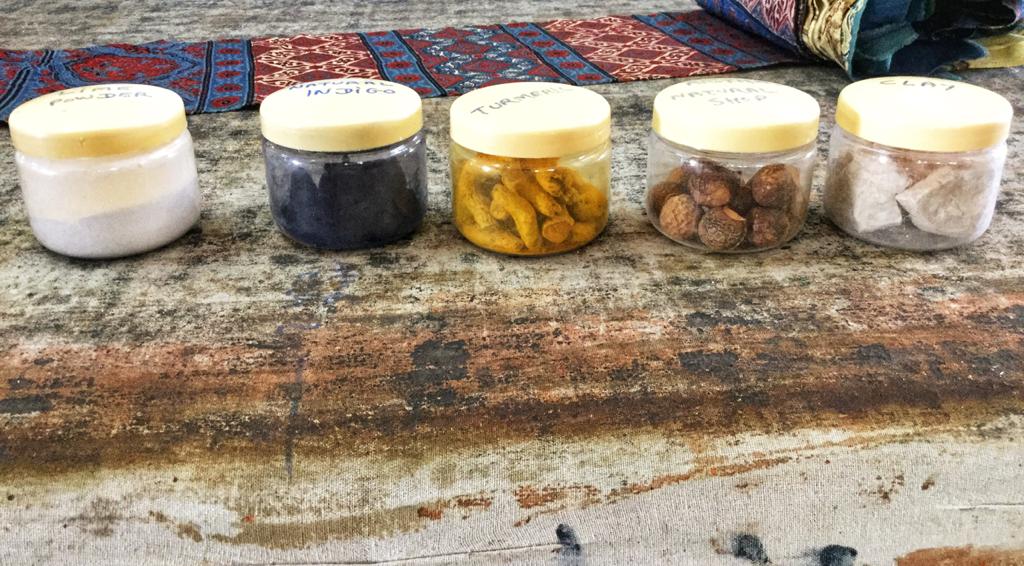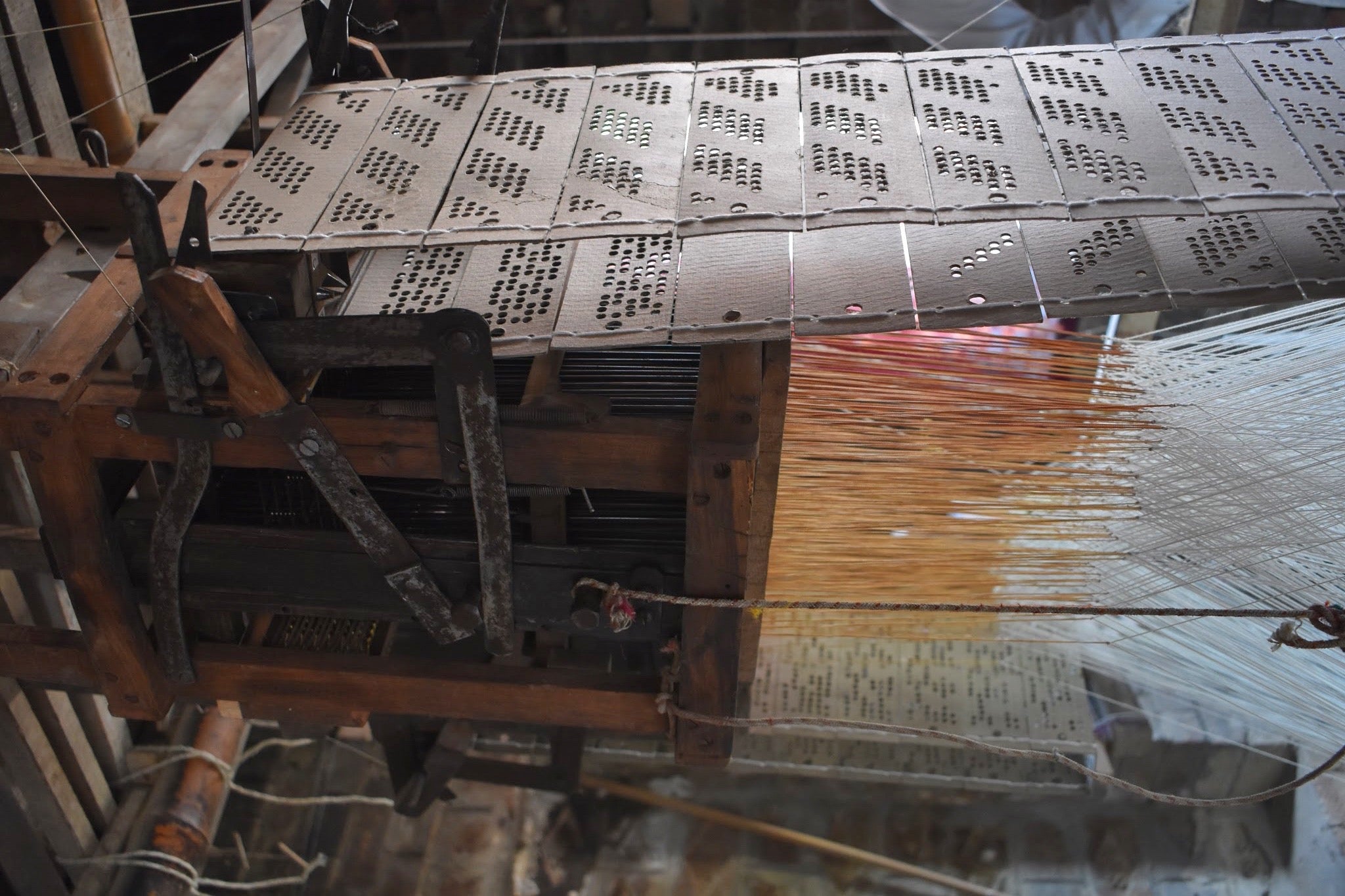
Natural dyes
Natural dyes…one of the strong pillars of Sustainability
Clothes have been coloured using natural dyes in the past for many years, there are references available which hold true to the fact that herbal resources have been used to colour the clothes since the times of Ramayana and the mention in our Vedas of these ingredients only strengthens this belief.
It’s only when the first artificial die was discovered in 1856, that the natural dyes began to lose their relevance. The synthetic dyes took the textile industry by storm as they were inexpensive and took lesser time and effort to give better results.
Use of natural dyes is gaining relevance once again due to the negative impact of synthetic dyes on our environment. Natural dyes also offer a wider scope for a lot of experiments just by changing the recipe of the colour making and help the dyers to obtain diverse shades right from bright earthy tones to the calm pastel ones.
Why you should choose Natural dyes over the synthetic ones-
Natural dyes don’t only benefit our environment and our skin but also our conscience as we know that we are doing our bit in saving our planet from gradual degradation.
Let’s look at some really cool advantages of using natural dyes-
- They are skin friendly
- They are environment friendly
- They are biodegradable
- They are sustainable as it gets
- They do not release any harmful toxins during manufacturing
- They are regenerative
Mordants and Tannins
Before we dive into the process of getting to know some of the amazing and unusual sources of Natural Dyes, let’s get to know some words that you will again and again come across, the word “mordant” or the process of mordanting, a mordant, I.e, a “binder”is a necessary ingredient for dyes to get absorbed by or fixed on the fabric, popularly used mordant for dying of fabrics is “alum”or Fitkari, as known in Hindi.
The other word is “Tannin” which is an acid that is used to mordant the plant based fibres like “cotton and linen” before the alum is used, mordanting with a Tannic acid facilitates better combination of alum with the fibre and thus yields a better colour on the fabric.
Significance of water and its characteristics during dying
Water plays a very significant role in the process of dying and the kind of results it gives on the fabric. There are some natural dyes that work well with hard water while some turn out beautifully if soft water is used.
Madder is a dye that holds better in hard water, the presence of calcium and magnesium salts helps the colour to solidify better.
Materials like soda ash, household ammonia or wood ash water is added to push the pH level of water up if required for the dye to turn out better.
Scouring the fabric before dying
This is the process of washing the fabric throughly once it comes from the factory before dying. Scouring helps the fabric to get rid of all the excess starch and other impurities which might hinder the absorption of the colour by the fabric.
The origin of Natural Dyes can be classified as follows
Dyers have classified the dyes on the basis of their origins which goes as follows:
First is the Vegetable origin dyes, these majorly comprise of all the parts of plants and trees, like the seeds, roots, stems, bark, leaves and flowers.
Secondly , there is mineral dyes which are extracted from mineral ores like red clay, ball clay, these are used to obtain light colours when combined with minerals salt, these are not very popular as the colour strength is inconsistent.
If you are into natural dyes you must have come across few popular sources of natural dyes, we are going to explore some of them here for you-
- Jackfruit- This is used to obtain the yellow to brown shades, here the wood of this tree is thrashed into small bits and then boiled in water to extract the dye addition of mordant leads to the desired hues of yellow to brown. This source is majorly used for cotton and jute fabrics.
- Turmeric- The root of the plant is the source of this dye the root is first dried and then transformed into a fine powder and then boiled with water to get the gorgeous yellow colour. The colour ingredient present in turmeric is known as “curcumin”.
- Onion Peels- This is used to get shades of orange to brown, here the onion skins are boiled to extract the colour and may or may not need a mordant, while dying the fabric.
- Heena- Get the shades of Brown to mustard yellow the Heena leaves are dried and crashed into a fine powder and then boiled with water to extract the dye, the fabric prepared with a mordant helps to give the desired colour from brown to yellow. This colour can also be prepared by mixing alum and turmeric in suggested proportions.
- Indigo- Gives the various shades of blues. This is a plant based dye and the major source do this dye is “indigoferra tinctoria” which is wild shrub that grows in tropical areas. This colour is obtained from the process where the indigo plants are kept submerged in water for them to ferment, after the fermentation process completes the liquid is separated from the plants which is reduced to debris form in the process, this liquid is then aerated to get the final product or dye. Indigo is kind of a Vat dye.India is believed to be the oldest centre for a Indigo dying and was the primary supplier of this dye to Europe.
- Madder or Manjistha- Shades obtained, Red. The root of the plant like in turmeric is the source of this d the root is cleaned, dried in sunlight and then boiled in water to extract the dye. Madder root dyes are primarily used to die cotton silk and wool fibre. The colouring component in madder is known as “Alizarin” . This is used with a mordant for better results.
- Safflower- These flower petals are used to obtained cherry red or yellowish red hues. The petals of this Flower are soaked in water and then boiled for a minimum of two hours this process is repeated twice for better results the liquid is extracted and filtered and then vacuum tried to obtain a highly potenttent powder which helps to get bright red and yellow red colour on to the fabric.
- Iron scraps- The process to make a black colour dye is lengthy and laborious, iron scraps along with jaggery and tamarind are soaked in water for around two weeks and then cooked on low heat to prepare the black dye naturally.
- Tamarind- The seeds of tamarind are used to prepare the dye to get shades of brown and golden brown depending on the amount of mordant. This dye works well on silks. The tamarind seed and the seed coat are boiled in water to get this dye.
- Pomegranate Rind- The peels of pomegranate are used to get shades of yellow. Pomegranate Rind is a rich source of iron and natural tannins and can also be used as a tanning material. Using pomegranate rinds helps the dyers to skip the use of tannins and can directly mordant the fabric for better results.
A dyers’ work is not only to know that which plant or source will yield what colours but also to understand that which colour will work better on which fabric and under what kind of circumstances a colour will yield its optimum glory on to the fabric.
We need to understand that dies unlike paints can’t give an opaque finish but they only add to the natural aesthetic’s of the fibre. The process of natural dyeing is immensely pleasurable and gratifying it is a treasure passed on from times immemorial and we need to save this practice by not looking at natural dyed items as a liability but an irreplaceable asset.















Leave a comment
This site is protected by hCaptcha and the hCaptcha Privacy Policy and Terms of Service apply.